Blind Drawing Performance Anthi Kosma
Course: Introduction to Architecture I, School of Architecture, University of Thessaly, Volos
Professors: Phoebe Giannisi (Professor), Anthi Kosma (Lecturer), Iris Lykourioti (Associate Professor), Kostas Manolidis (Professor), Fabiano Micocci (Assistant Professor),
(Names listed alphabetically)
Responsible for the action: Anthi Kosma
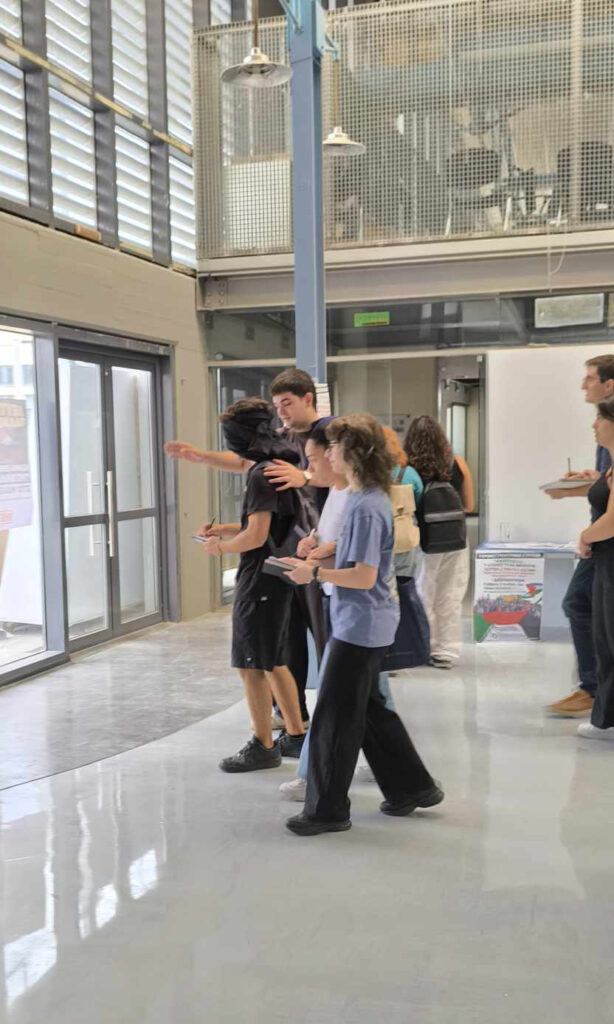
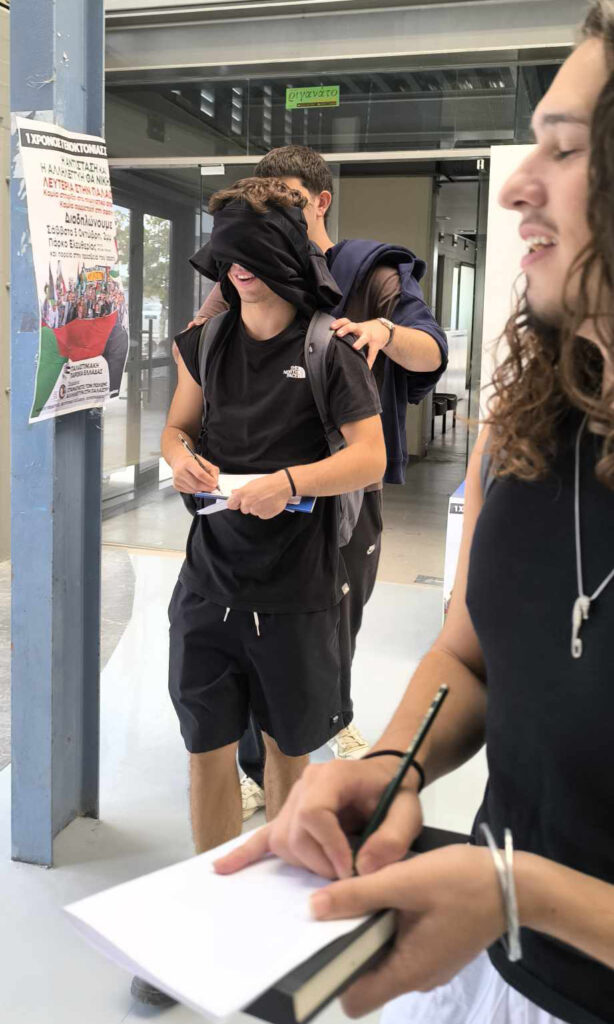
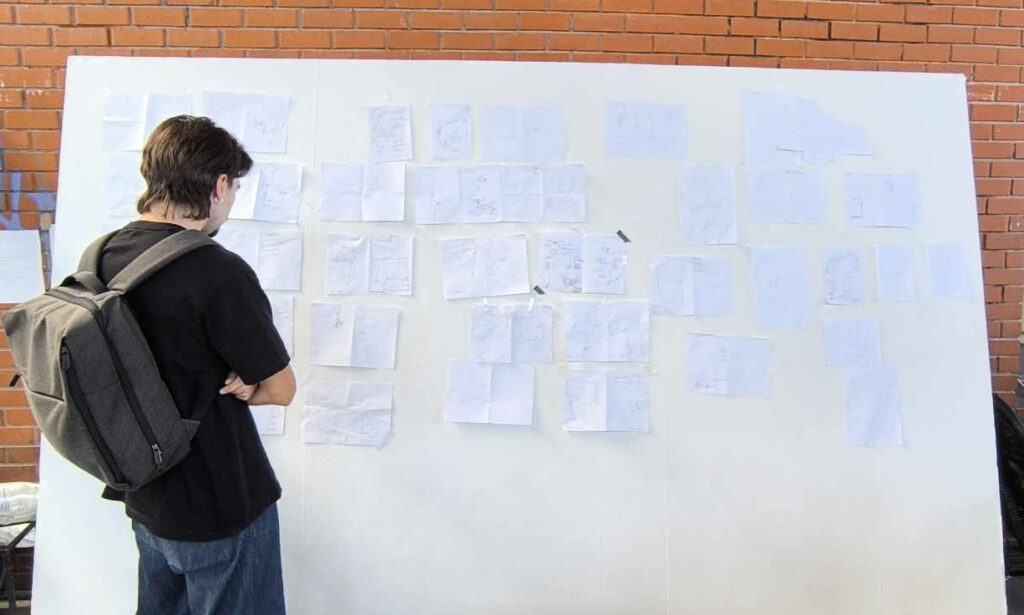
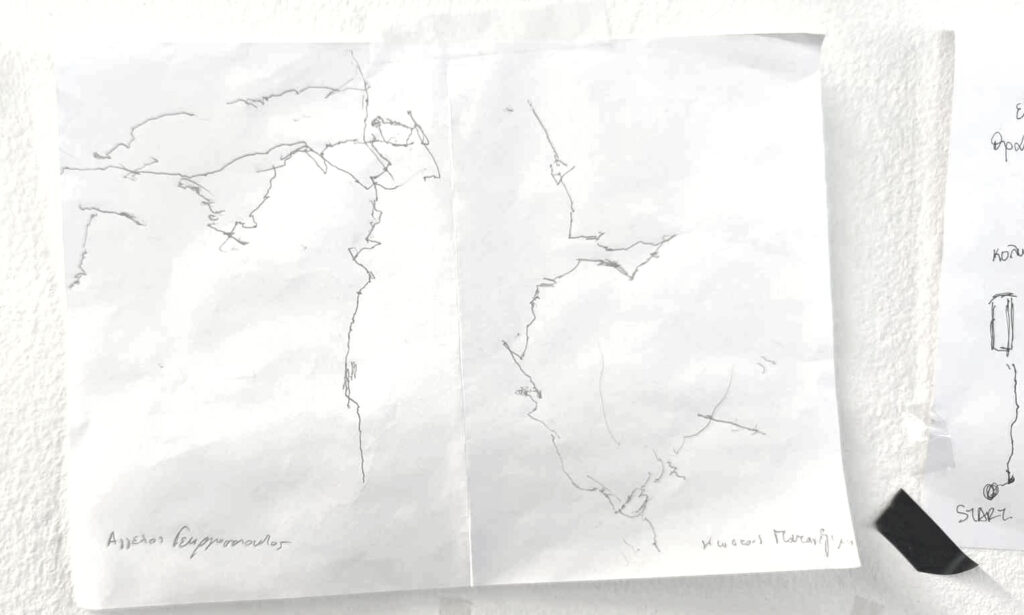
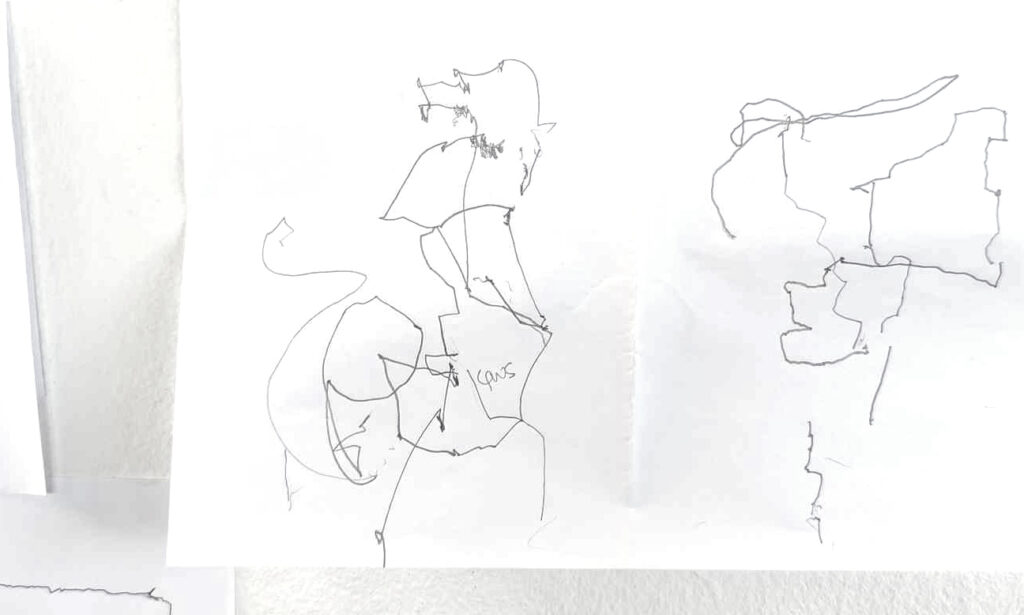
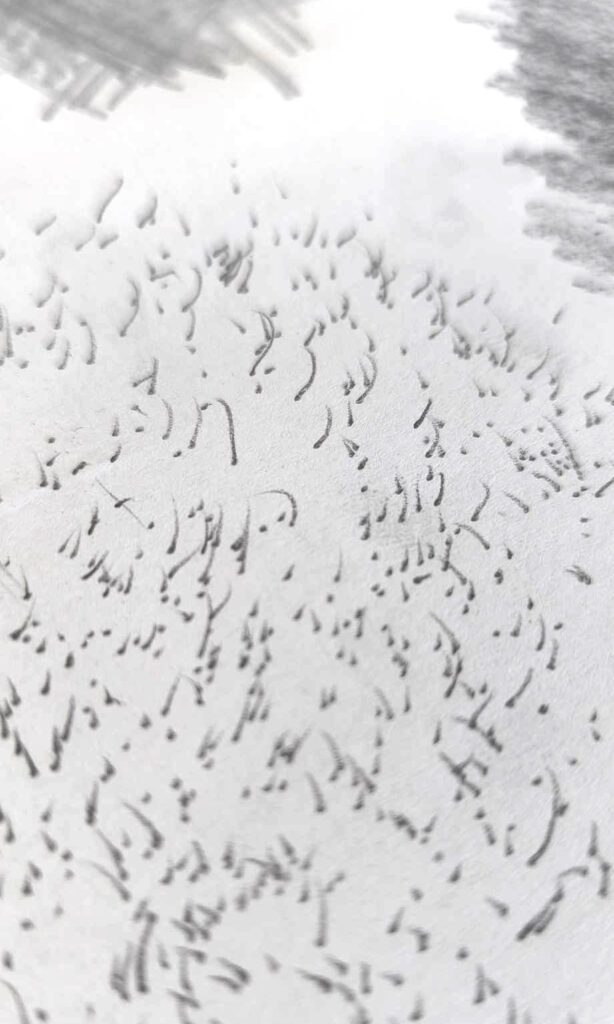
Part A – The First Blind Steps
Students formed groups of two.
Roles: A blind “detective” who records the route on paper and their guide.
Itinerary: The blind subjects and their guides started by crossing the main corridor of the building to the outside area, where they would change roles before returning to the classroom, completing a circular route.
“It was scary; I had to trust. I had no orientation, my footsteps were fumbling, and my soles seemed suctioned to the floor, struggling to separate from the earth. My steps were hesitant, barely lifting, searching the world with them. My hands were ‘swimming’ in the void. A big blind step was actually a small one; a big ‘step on a stair’ was a small difference in height on the ground. A big blind line on the paper was a small, scared trace on the edge. Everything felt big but was small. I needed the other, just as we needed that precious caregiver when taking our first steps as children. “Independence was lost—or was it a myth?” The first blind steps. What was once an obvious movement now had to be verbalized, find precise descriptions to protect and guide the blind subject. I could sense changes in the floor’s texture and temperature differences. What would the experience be like if the path was completely unknown?”
Notes based on comments from the discussion following the performance (Image 1 &2).
Blind drawings were placed on a board (Image 3). What would an unbiased glance say about these seemingly careless traces? Instead, our “blind” experience could “read” the “hesitant” and “afraid” lines, those losing their balance, frightened that lifting from the paper would cause them to lose their route and continuity. These lines and gestures were anxious about the limits of the paper. How much room for movement did they have? Most drawings were recordings of movements and paths. Continuous lines of movement. Unstable movements, sensitive to vibration, but free from the control of vision and analytical logic.
“If we didn’t know how they were produced, we might say they were ‘childish.’ Childlike, they observe and trace the world through their codes.” (Image 4.1, 4.3)
Part B – Listen to the Drawing
During the second part of the lesson, blind subjects with their graphic engravings began to search for the textures of tables and other objects and bodies. With eyes closed, the line drawings on paper were searching for relief, any fold or resistance on the surfaces was “grabbed” in the drawing. Later, the samples of the textures from the blind drawings became the occasion for a long discussion on surfaces, materials, texture, touch, and how textures are represented in architectural drawings such as facades drawings.
The sound of the lines shading resembled the rustling of leaves. The blind graphic experiments continued. The sounds of the traces became the gradual tapping of dots, the sound of a graphic “rain.” It grew louder as it dropped its dots on the paper, causing a sonic “thunderstorm.” (Image 5) Pen/cils became the musical instruments of a percussion concert. The large number of participants made the rhythm of the graphic rain intense, conveying and intensifying the surprise and excitement in this drawing experience. Now blind musicians, truly abandoned from their ocularcentric commitments, were play-drawing.
DRAWING RESEARCH NETWORK
hosted by TRACEY at Loughborough University